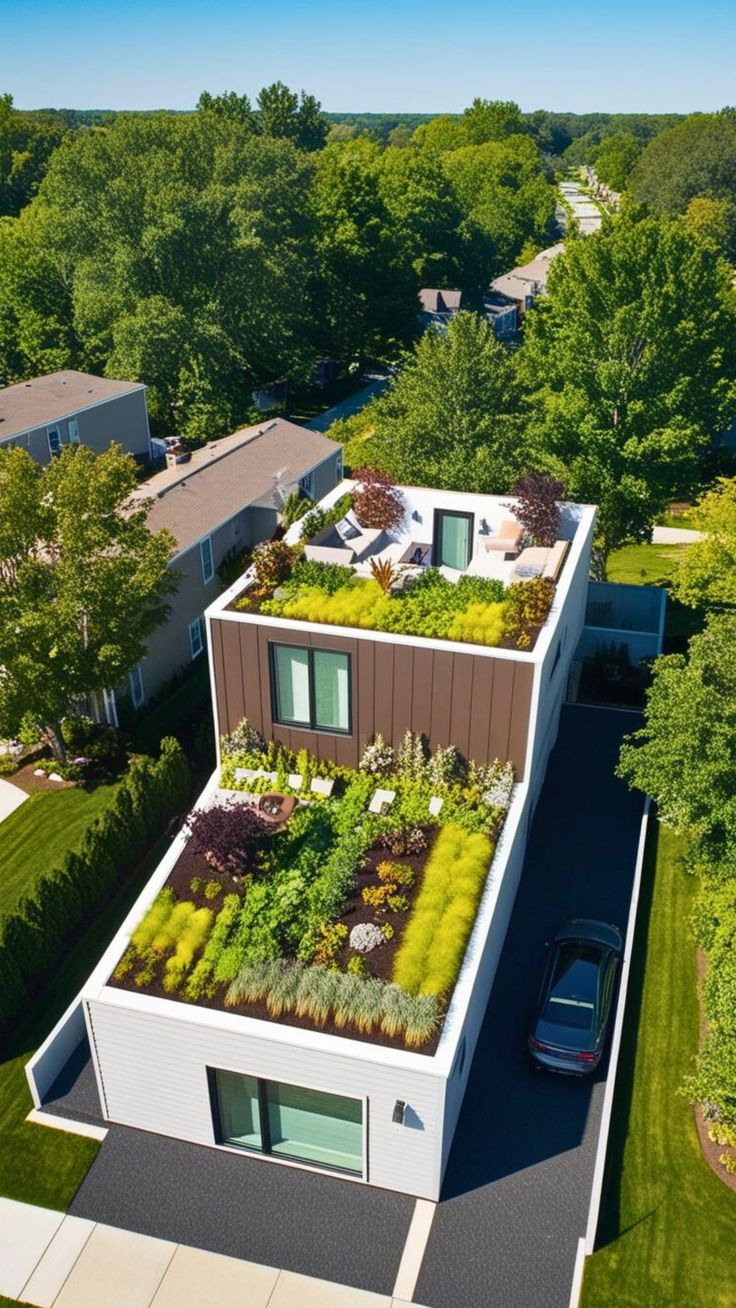As cities around the world become more congested, concrete jungles dominate skylines, and green spaces shrink under the pressure of urban sprawl. In this landscape, green roofs are emerging as a powerful and practical solution, transforming barren rooftops into lush, living ecosystems that offer environmental, economic, and social benefits.
In Kenya, where urban areas like Nairobi, Mombasa, and Kisumu are expanding rapidly, green roofs represent an innovative way to mitigate the environmental toll of growth while improving quality of life.
What is a Green Roof?
A green roof, also known as a living roof, is a layer of vegetation planted over a waterproofing system installed on top of a flat or slightly sloped roof. These systems vary in complexity and design but generally include the following layers:
- Vegetation (plants, grasses, shrubs)
- Growing medium (soil or lightweight substrate)
- Filter fabric
- Drainage layer
- Waterproof membrane
- Structural support
Green roofs can be extensive (lightweight and low-maintenance) or intensive (heavier, often with walkable gardens and deeper soil layers).
Key Benefits of Green Roofs
1. Urban Temperature Regulation (Cooling Cities)
Green roofs reduce the urban heat island effect, where built-up areas become significantly warmer than rural surroundings. By absorbing sunlight and providing insulation, green roofs help keep buildings and cities cooler.
2. Stormwater Management
Traditional rooftops contribute to flooding by channeling rainwater directly into drainage systems. Green roofs absorb and slow down rainwater, reducing the risk of sewer overflows, erosion, and flash floods, particularly valuable in flood-prone urban neighborhoods.
3. Improved Air Quality
Plants filter pollutants and particulates from the air. Green roofs contribute to cleaner urban air, absorbing carbon dioxide and producing oxygen.
4. Energy Efficiency
Green roofs offer natural insulation, reducing the need for air conditioning and heating. In Kenyan cities where temperatures vary dramatically, they help stabilize indoor climates and cut energy bills.
5. Extended Roof Lifespan
The protective layers in a green roof shield the waterproof membrane from UV radiation, temperature fluctuations, and mechanical damage , extending roof life by two to three times compared to conventional roofs.
6. Urban Agriculture
In densely populated areas, green roofs can be used for growing vegetables and herbs, contributing to household food security and supporting small-scale urban farming initiatives.
7. Biodiversity and Aesthetics
Green roofs provide habitats for birds, butterflies, and insects, enhancing urban biodiversity. They also improve the visual landscape of cities, replacing gray surfaces with greenery.
Green Roofs in the Kenyan Context
Kenya’s urban environments are well-suited for green roof implementation, especially due to:
- Adequate sunlight for plant growth
- High levels of rainfall in some regions, ideal for stormwater harvesting
- Growing demand for sustainable and energy-efficient buildings
Some pioneering institutions in Kenya have started integrating green roofs, including:
- Strathmore Business School: Incorporates eco-conscious architecture with energy-saving and rainwater harvesting features.
- Garden City Mall, Nairobi: Features green landscaping on elevated terraces and eco-roof spaces.
Challenges and Considerations
Despite their many benefits, green roofs are not without challenges:
- Initial Cost: Installation can be costly due to materials, structural reinforcement, and expertise required.
- Structural Load: Not all buildings are designed to support the added weight of a green roof, especially intensive types.
- Maintenance Needs: Although extensive green roofs are low-maintenance, they still require occasional weeding, irrigation, and inspection.
- Water Management: In drier climates or dry seasons, irrigation systems may be necessary to keep vegetation healthy.
Design and Implementation Best Practices
To successfully implement green roofs in Kenya:
- Conduct Structural Assessment: Ensure the building can bear the weight of soil, water, and vegetation.
- Choose Native Plants: Use drought-resistant and indigenous plant species to reduce maintenance and water needs.
- Install Quality Waterproofing: Prevent water leakage and long-term structural damage.
- Include Drainage Systems: Ensure proper drainage to avoid water pooling and root rot.
- Engage Experts: Architects, landscape designers, and structural engineers should collaborate during planning and installation.
Policy and the Future of Green Roofs in Kenya
To promote green roofs nationally, Kenya could:
- Integrate green roofing into building codes
- Offer tax incentives or subsidies for sustainable construction
- Encourage public buildings, such as schools, hospitals, and government offices, to lead by example
- Include green roofing in urban planning policies as a climate resilience strategy
Green roofs are more than an architectural trend, they are a sustainable solution to some of Kenya’s most pressing urban challenges. They offer cooling, stormwater control, food production, and environmental enrichment, all while making cities more livable and beautiful.
As urban Kenya seeks pathways to resilient, climate-smart development, green roofs can play a transformative role—bringing nature back into the skyline, one rooftop at a time.

